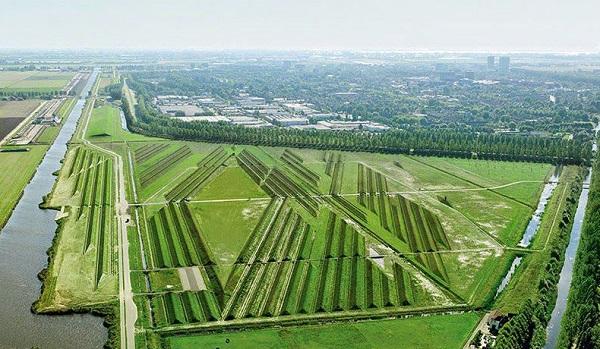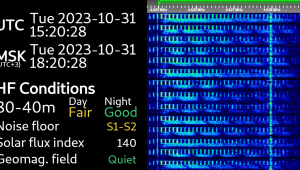Hello there, I am Dutch and just had to correct you on the Polderban, this should be Polderbaan ;)
And yes, we have little space available, so we have to come up with these kind of solutions.
So Your Neighbor Likes to Play His Stereo Really Loud

Fortunately, I have a solution for you. You don't need to peruse local noise ordinances, bother law enforcement officers, or even open your window and shake your fist. You will, however, need a hundred acres and a bulldozer. A small price to pay for a good night's sleep.
Inspiration for our neighbor's noise pollution fix comes all the way from Amsterdam and in particular, Schiphol Airport. Nearby residents, much like residents worldwide living near airports, complained about the incessant rumble from the jet engines of planes taking off. Fun fact: Schiphol averages 1,400 flights daily, or about 1 flight every minute.
Like much of the Netherlands, the topography around the airport is pool-table flat. Aside from nominal losses as sound eases itself across flat terrain, there is little to impede jet engine noise as it blasts from turbine to house. There's been an airport on the site since 1916, but things got really bad when the remote Polderban runway was opened in 2003; reportedly, the noise could be heard more than 17 miles away.
Airport officials tried, and failed, to implement noise-abatement solutions. Walls, such as commonly used along highways, aren't effective because the low frequencies (long wavelengths) of jet noise easily pass over and around any reasonably-sized barrier. Then in 2008, residents pointed out an interesting phenomenon — the noise seemed to diminish a bit whenever the fields nearby were freshly plowed. The furrows seemed to help absorb and disperse sound energy. Acting on this, the airport called in H+N+S Landscape Architects and artist Paul De Kort.
They reshaped a 90-acre tract of flatland around the runway into a series of ditches and ridges, roughly 9 feet high from trough to crest, and distance between ridges of about 36 feet. There are a total of about 150 such formations, straight and symmetrical. After completion, in 2014 noise was monitored at 35 locations in the area, and it was determined that low-frequency noise did not exceed the desired target levels. You can get a closer look at the formations in this YouTube video. Also, next time you fly out of Schiphol on the Polderban runway, note that since the offending sound mainly emanates from behind planes, the formations are behind you as you take off.
In a very European manner, the landscaping was further developed into a public park. There is a central paved bicycle lane, and footpaths passing between the ridges. De Kort also installed art pieces including the "Listening Ear," a parabolic dish that amplifies distant sounds, and "Chaldnipond," a pond with a submerged mechanism that creates waves in the water.
And the long-suffering nearby residents? Apparently the landscaping is appreciated, but the airport is still working on the problem, dictating when certain (loud) planes can take off, and requiring airlines to phase out the worse offenders. They are hoping to achieve a 10-dB noise reduction at low frequencies.
So there you go. Fire up the 'dozer, and start excavating. That should take some of the boom out of your neighbor's subwoofer. Or, just call the cops.
- Log in or register to post comments
































































